Covering the five weeks 29 December 2024 – 01
February 2025
-
UK Total retail sales increased by 2.6% year
on year in January, against a growth of 1.2% in January 2024.
This was above the 3-month average growth of 1.1% and above the
12-month average growth of 0.8%.
-
Food sales increased by 2.8% year on year in
January, against a growth of 6.1% in January 2024. This was
above the 3-month average growth of 2.3% and below the 12-month
average growth of 3%.
-
Non-Food sales increased by 2.5% year on year
in January, against a decline of 2.8% in January 2024. This was
above the 3-month average growth of 0.2% and above the 12-month
average decline of 1.1%.
-
In-Store Non-Food sales increased by 2.6% year
on year in January, against a decline of 2% in January 2024.
This was above the 3-month average decline of 0.7% and above
the 12-month average decline of 1.7%.
-
Online Non-Food sales increased by 2.2% year
on year in January, against a decline of 4.2% in January 2024.
This was above the 3-month average growth of 1.8% and above the
12-month average growth of 0.1%.
-
The online penetration rate (the proportion of
Non-Food items bought online) decreased to 35.7% in January
from 35.8% in January 2024. This was below the 12-month average
of 36.7%.
Helen Dickinson OBE, Chief Executive
of the British Retail Consortium, said:
“January sales kicked off a solid month for retail with stores
delivering their strongest growth in almost two years, albeit on
a weak comparable. Consumers headed to the shops to refresh their
homes for the year ahead, taking advantage of big discounts on
furniture, bedding and other home accessories. With growth across
nearly all categories, only toys and baby equipment remained in
decline. While the bouts of stormy weather put a temporary
dampener on demand, sales growth held up well throughout the rest
of the month. This was also helped by the earlier start of the
reporting period, adding a few more post-Christmas shopping days
into the mix.
“Whether this strong performance can hold out for the coming
months is yet to be seen. Inflationary pressures are rising,
compounded by £7bn of new costs facing retailers, including
higher employer national insurance contributions, higher National
Living Wage, and a new packaging levy. Many businesses will be
left with little choice but to increase prices, and cut
investment in jobs and stores. Government can mitigate this by
ensuring its proposed business rates reforms do not result in any
shop paying more in business rates.”
Linda Ellett, UK Head of Consumer, Retail & Leisure,
KPMG, said:
“2025 got off to a welcome start for retailers with much needed
sales growth in January. But viewed over a three-month
period that included Christmas and Black Friday, non-food sales
have flatlined. Overall, the golden quarter failed to
shine.
“The trading environment remains tough for retailers, with
consumer demand still subdued and household essential bills still
high. Business costs are also coming under pressure, with
rising employment costs only increasing that in the coming
months. Boardroom focus on costs and competitiveness is
sharpening. Pricing adjustments, product launches, store
closures, job losses, and increased automation and AI are all set
to reshape the retail landscape in 2025.”
Food & Drink sector performance | Sarah Bradbury,
CEO, IGD, said:
“The current climate of economic uncertainty is reflected in
IGD's January shopper confidence index, which has declined by 3
points. With unemployment at 4.4% (+0.4% vs this time last year),
shoppers have responded by employing strategies to control their
spend. The notable increase in volume over value sales suggests a
shift towards private label products and a change in purchasing
categories, as shoppers anticipate further price rises for food
and drink.”
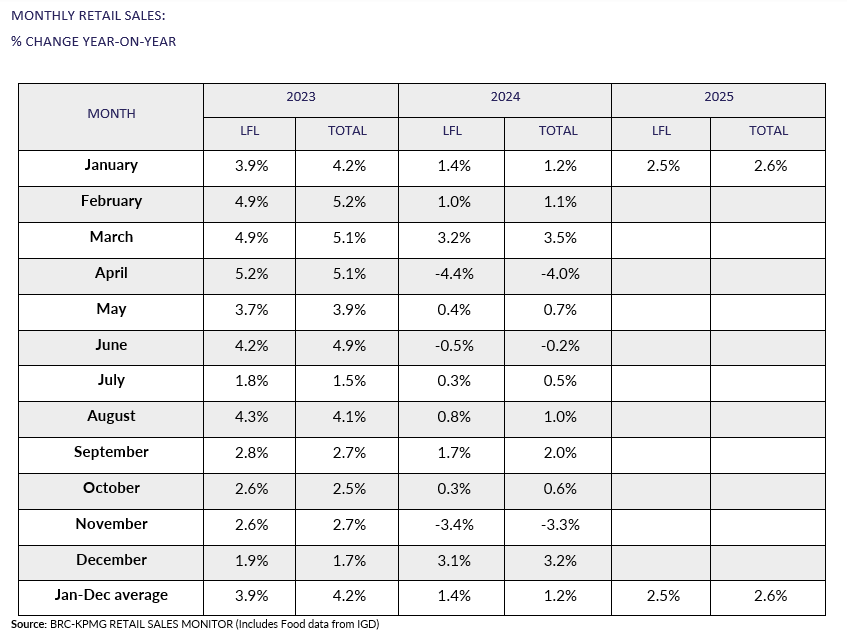
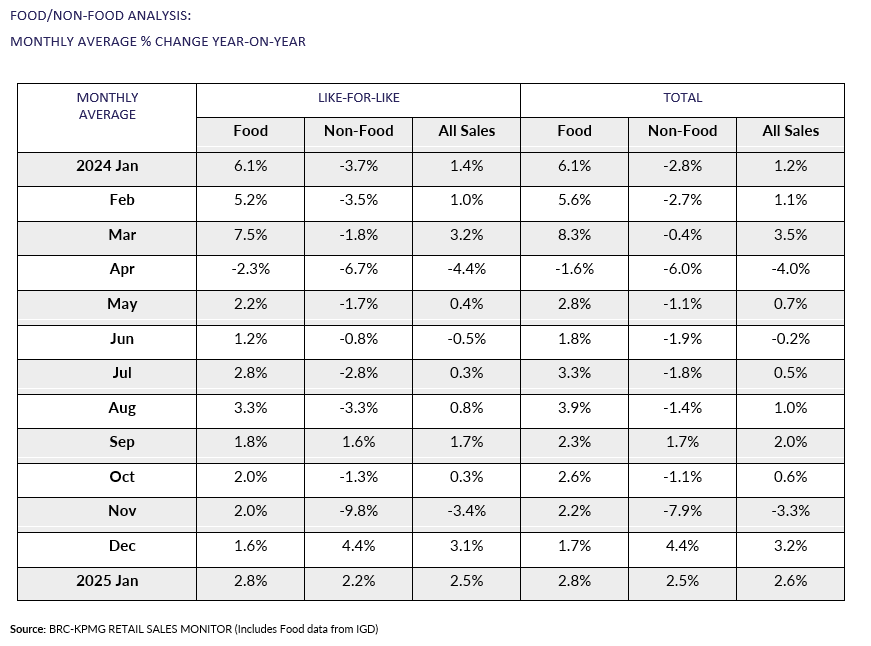
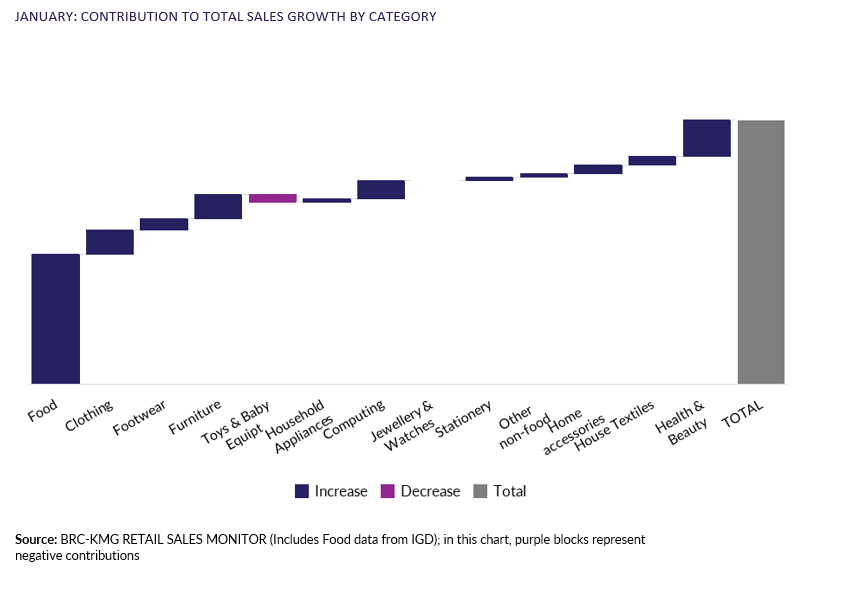
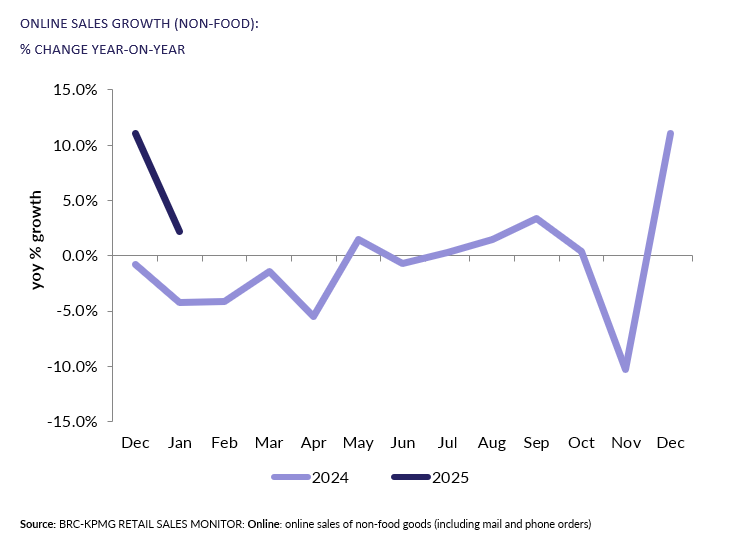
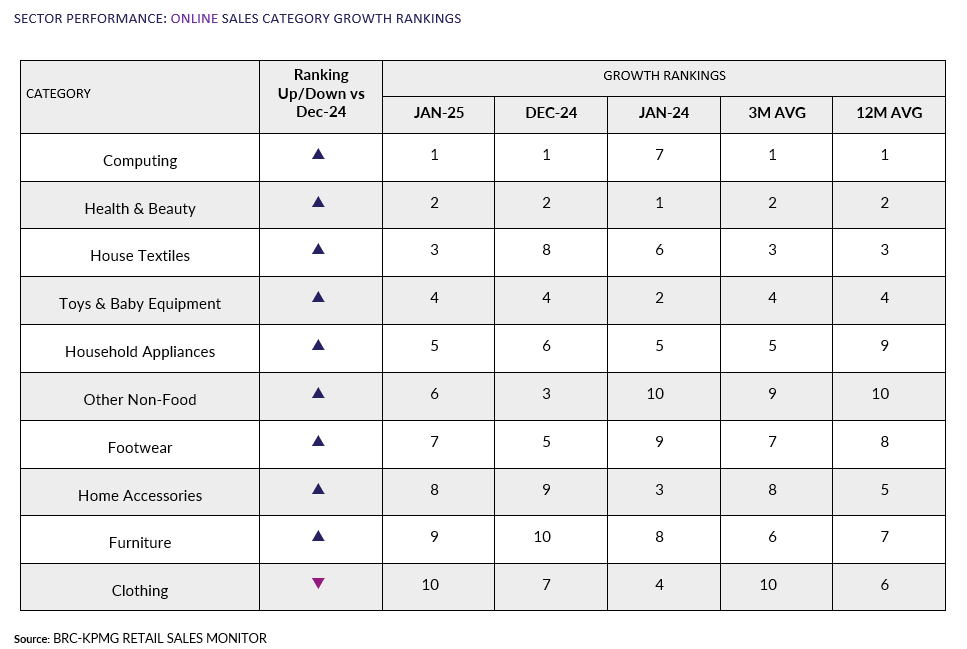
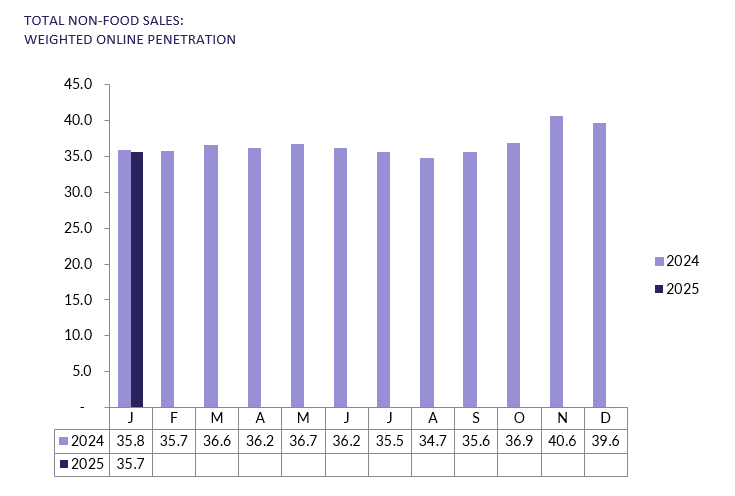
-ENDS-
Notes:
- Like the ONS, the BRC typically follows a 4-4-5 pattern for
the number of reporting weeks in each month (January-4 weeks,
February-4 weeks, March-5 weeks and so on throughout the year).
Following the ONS, the BRC is using a 5-week January this year
instead of the typical 4 weeks. Therefore, 2025 will be a 53-week
year. The comparison weeks for last year will follow this year's
schedule; weeks 1-5 of this year will be compared to weeks 1-5 of
last year for January, then February weeks 6-9 of both years, and
March weeks 10-14 of both years. The rest of the year will follow
the 4-4-5 pattern with week 53 being compared to week 1 2025.
